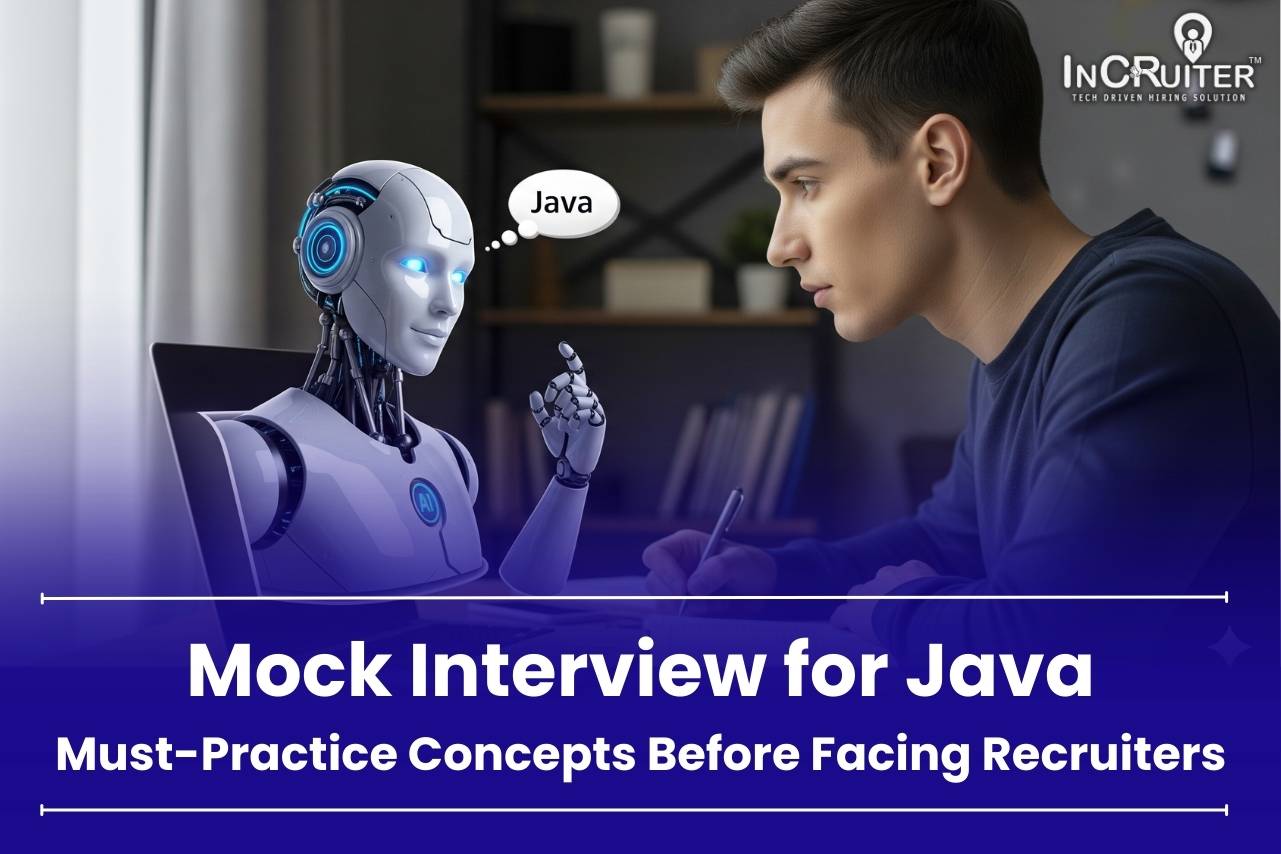Keeping up with technology feels like chasing a fast-moving train, with new tools and updates appearing constantly. For hiring teams, the challenge lies in accurately assessing a developer’s skills. Code pairing interviews offer a hands-on way to uncover real talent beyond polished resumes and buzzwords. Traditional hiring methods often fail because coding isn’t about memorizing algorithms; it’s about solving real problems and working with others. Code pairing interview sessions mimic real-world scenarios, showing how candidates think, communicate, and adapt.
As technology evolves, finding adaptable and capable people is vital. Code pairing interviews aren’t just another tool; they’re a smarter way to build skilled and reliable teams.
Let’s dig into why this method is shaking up the way we hire top developers.
What is a Code Pairing Interview?
A code pairing interview is a hands-on way to evaluate a developer’s skills. Instead of relying on textbook questions or hypothetical scenarios, candidates work together with an interviewer to solve practical coding challenges in a shared workspace. It’s like watching their thought process come to life, as they write, debug, and refine their code in real time.
What sets this approach apart is its focus on teamwork and adaptability. It’s not just about typing lines of code; it’s about solving problems effectively while communicating clearly. This method gives you a direct view of how a candidate handles challenges, collaborates, and applies their knowledge to real-world tasks. It ensures that you’re assessing not just what they know but how they use it when it truly counts.
Also read: Top 10 Pair Programming Platforms for Collaborative Coding Interviews
Why Live Coding Interview Essential for Hiring Top Developers?
Live coding interviews offer an unfiltered glimpse into a developer’s true capabilities. They showcase how candidates tackle real-world challenges, communicate their thought processes, and adapt under pressure skills that are impossible to gauge from a resume or standard Q&A.
Curious about why this approach is a game-changer for tech hiring? Let’s dive into why this approach is a must-have for hiring top-notch developers.
Evaluating Real-World Problem-Solving Skills
In software development, the ability to solve problems is non-negotiable. Developers face bugs, inefficiencies, and system failures regularly. Collaborative coding replicates these scenarios during interviews. For instance, many companies, including Netflix, use this method to see how candidates break down problems, write clean code, and handle challenges. Instead of theoretical “what-if” questions, you watch the candidate tackle a real issue, such as debugging a failing API call or optimizing a slow algorithm.
This approach not only reveals how skilled they are but also how resourceful they can be under pressure. According to a survey by CodinGame, 65% of developers prefer practical tasks during interviews because they showcase abilities more authentically than traditional formats. When someone picks a structured yet creative path to solve a problem, it’s a clear sign they know their craft.
Testing Communication Skills in Real Time
Coding isn’t a solo job anymore. Developers must work closely with designers, product managers, and sometimes even clients. During the virtual coding setup, you observe how candidates explain their thought processes, clarify their logic, and collaborate with a teammate.
Take Spotify, for example. Their hiring team uses pair programming to ensure candidates can work effectively in a team. They’ve found that clear communicators often make better teammates, no matter how strong their technical skills are. Watching a candidate explain why they chose recursion over iteration or why they structured a database query in a specific way reveals if they can convey complex ideas in simple terms.
Assessing Team Compatibility
A team’s success depends not only on technical skills but also on how well its members gel together. Code collaboration gives you a chance to see if a candidate fits into your work culture. Are they receptive to feedback? Do they respect different viewpoints? You’ll know within minutes.
A fast-growing SaaS company recently shared that they reduced their attrition rates by 20% by integrating code pairing interviews into their hiring process. They paired candidates with developers already on the team to see how well they collaborated. Those who adapted seamlessly to the team’s style were hired, leading to better team morale and retention.
Understanding the Approach to Challenges
Software development is full of unexpected hurdles, bugs, tight deadlines, and evolving requirements are just the tip of the iceberg. How a developer approaches these challenges says a lot about their capabilities. Live pair coding sessions shine a spotlight on this.
Take GitHub’s example. They use a pair programming setup of natural interviews to evaluate candidates’ problem-solving approaches. One candidate, when faced with a tricky bug, calmly broke it down step by step while asking thoughtful questions. This showed not only technical expertise but also composure, a quality essential for high-pressure environments.
Spotting Teaching and Learning Abilities
In any team, developers often need to teach and learn from each other. Code pairing naturally brings these traits to light. During the session, you’ll see whether the candidate is open to learning from their partner’s perspective and if they’re willing to share their knowledge in a constructive way.
Amazon’s hiring process stands out here. They assess if candidates can guide junior developers during code pairing interviews. One candidate impressed the hiring team by simplifying a complex algorithm for their partner while providing actionable feedback. This ability to mentor and collaborate can make or break a team’s success.
Detecting Red Flags Early
Traditional interviews might not reveal a candidate’s true working style. Code pairing interview, on the other hand, creates a transparent environment where you can identify potential issues like arrogance, inability to adapt, or poor teamwork.
For instance, a mid-sized tech company shared an example where a candidate dismissed their partner’s suggestions outright during a Code pairing interview session. This raised concerns about their openness to collaboration, leading the company to pass on them. Catching these red flags early saves time, effort, and money.
Ensuring Long-Term Fit
Code pairing interviews help identify developers who are more likely to stay and contribute for the long haul. By working alongside an experienced team member, candidates reveal how well they adapt to real-world workflows and team dynamics. Employers can see how they approach challenges, communicate under pressure, and integrate into the existing structure.
This clarity reduces the risk of hiring someone who might leave midway through a critical project. When developers exit mid-project, it disrupts timelines, increases workloads for remaining team members, and sometimes delays product delivery. Pair programming mitigates this risk by finding candidates who align with both technical and cultural needs, ensuring continuity and stability in teams.
Also read: Why Pair Programming Interviews are Better than Traditional Coding Tests?
Comparing Code Collaborative Interviews with Traditional Interview Methods
| Aspect | Code Collaborative Interviews | Traditional Interview Methods |
| Stress Handling | Simulates real-time challenges to assess how candidates manage stress while solving problems. | Rarely tests stress management directly; often relies on theoretical problem-solving. |
| Code Quality | Examines the quality of code written during collaboration, including readability, structure, and scalability. | Code quality is often judged through pre-prepared assignments or theoretical discussions. |
| Error Debugging | Tests how candidates debug issues collaboratively, a critical skill in real-world scenarios. | May overlook debugging abilities or test them in isolated, less practical settings. |
| Collaborative Tool Usage | Evaluates proficiency with modern collaborative tools like Git, shared IDEs, or real-time coding platforms. | Rarely incorporates tool usage into the evaluation process, focusing more on standalone skills. |
| Decision-Making Skills | Observes decision-making in coding, such as choosing algorithms or structuring solutions under collaborative pressure. | Relies on candidate explanations of past experiences, which may not reflect real-time decisions. |
| Conflict Resolution | Highlights how candidates handle differences in opinion with their coding partner during the session. | Conflict resolution is inferred from hypothetical behavioral questions, not observed in practice. |
| Time Management | Assesses how well candidates allocate time to solve tasks while collaborating with a partner. | Often tests time management in isolation without considering collaborative dynamics. |
| Adaptation to Coding Styles | Shows how candidates adjust their coding style to match team standards or partner preferences. | Little to no evaluation of adaptability to existing team coding practices. |
| Handling Feedback Loops | Observes how candidates incorporate partner or interviewer suggestions into their work effectively. | Feedback integration is typically not part of the evaluation. |
| Creativity and Innovation | Encourages candidates to brainstorm and propose creative solutions in real-time alongside a partner. | Creativity is often limited to static or predefined problem-solving exercises. |
How to Conduct Effective Code Collaborative Interviews?
Code pairing interviews can be an effective way to evaluate both technical prowess and collaboration skills, but only when conducted effectively. Here’s how you can make the most of them while ensuring a positive experience for both candidates and interviewers.
Preparing the Task
Start by designing a realistic coding challenge that aligns with the role you’re hiring for. The task should reflect the type of problems the candidate would tackle on the job, without being overly complex. Keep it concise focus on problem-solving and teamwork rather than trying to test every skill at once. This approach allows you to see how candidates think, communicate, and adapt, which is crucial when hiring top developers.
Setting Clear Expectations
Before diving into the session, explain the process. Clarify the roles of the driver and the navigator. Make the objective of the exercise clear and provide evaluation criteria upfront. This transparency helps reduce the candidate’s anxiety and creates a level playing field. Let them know it’s okay to ask questions, collaborate, and even make mistakes it’s all part of the process.
Using the Right Tools
The tools you use can make or break the session. Invest in reliable Code pairing interview like InCruiter pair programming interview solutions that facilitate seamless collaboration. Ensure both parties are familiar with these tools before the interview begins to avoid technical hiccups.
Fostering Collaboration
Pair programming interviews are as much about teamwork as they are about coding. Create a conversational and cooperative atmosphere. Encourage candidates to talk through their thought processes and ask questions. Provide constructive feedback throughout the session, guiding them without taking over. This approach not only helps you assess their skills but also gives candidates a glimpse into your team’s culture and workflow.
Also read: Live Coding Interview Platforms For Recruiters In 2024
Final Thoughts
Code pairing interviews are a step ahead in developer hiring. They bring a practical, collaborative, and transparent approach to evaluating candidates. From real-world problem-solving to team compatibility, communication skills, and adaptability, this method offers a comprehensive understanding of what a candidate brings to the table. With industry giants like GitHub, Spotify, and Microsoft leveraging this practice, it’s clear that pair programming is not just a coding method but a powerful hiring strategy.
If you’re looking to hire developers who are technically skilled, excellent collaborators, and ready to hit the ground running, the InCruiter pair programming interviewer platform is just the missing piece in your recruitment puzzle.



















